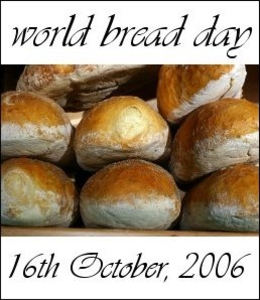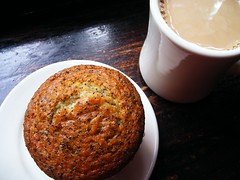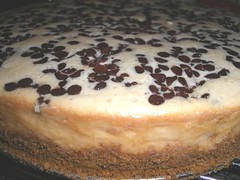 We had quite a few good questions for this installment of "Ask Breadchick"; ranging from a question about bagels that are soggy to why kneading makes a difference in some recipes and not others. We'll also cover what makes a good Belgian waffle and discuss this whole pressing a sandwich thing that is so popular right now and should you go out and buy a special appliance to do this. Great questions everyone! They kept me busy the last few weeks digging up answers and testing a few things out in the kitchen to see if my research was correct. Thanks everyone who wrote in! Now let's get right down to business shall we?
We had quite a few good questions for this installment of "Ask Breadchick"; ranging from a question about bagels that are soggy to why kneading makes a difference in some recipes and not others. We'll also cover what makes a good Belgian waffle and discuss this whole pressing a sandwich thing that is so popular right now and should you go out and buy a special appliance to do this. Great questions everyone! They kept me busy the last few weeks digging up answers and testing a few things out in the kitchen to see if my research was correct. Thanks everyone who wrote in! Now let's get right down to business shall we?Andrea over at "A Small Group of Thoughtful Citizens" wrote to ask why her bagels were shaped "wonky" (great word!) by doing the "fling-the-dough-around-your-finger thing" and "soggy and bland" after she bakes them. Andrea, there are three key things to getting tasty, chewy bagels vs. bland and soggy bagels. First, you need to use a special high gluten flour used in pizza dough (+14% protein) not bread flour or all-purpose flour. The only place I know to easily find this type flour in small enough quantities for the home baker is at King Arthur Flour through the Baker's Catalogue. You will want to order the Sir Lancelot flour. Second, you need to let the bagels "retard" overnight in the refrigerator. Retarding is a very slow raise that happens when you use cold instead of heat to let the yeast do it's job. This slow process lets the flavour really develop and the yeast ferment, giving off sugar and gasses that escape through the dough leaving tell tale signs by way of little broken bubbles on the surface of the bagel. When you are ready to bake the bagels, pull them out of the refrigerator and let them sit at room temperature about 20 minutes. This will give you time to preheat the oven (you want to make sure your oven is ready to go) and get your water to boiling for the Bagel Bath. Which leads us to the third and final step to chewy bagels, the boiling. This is the step that gives bagels that smooth, shiny look. The trick is to not over boil them (which will lead you to soggy). For chewy bagels boil them for only 30-45 seconds on each side and not for the four or more minutes I see in quite a few recipes. Then you can bake them as called for in your recipe. One other little thing that you should keep in mind when making bagels this way, because you are letting time do all the work, you may not need as much yeast as your recipe calls for. Whenever I do a really, long slow rise with my bread, I typically cut back on my yeast by a 1/3 to a 1/2 depending on how long the slow rise will be. You may have to play around a bit with this to figure out what works best for your recipe. Now let's fix Andrea's "wonky" shaped bagels.
A few years ago, I was in NYC and watched a guy in a small bakery making bagels. I asked him how he got the shape right and here is what he told and showed me: after you make the dough, divide it into 8 equal pieces. Let the dough rest for about 20 minutes by loosely covering with a towel or plastic wrap. Take a piece of dough and roll it out between a flour dusted surface and the palm of your hand until you have a dough rope about 6 - 8" long, making sure you don't taper the ends too much. Form a circle with the dough rope overlapping the ends about 1/2". Slip the bagel over your fingers with your hand palm down, making sure the overlapped ends are between your palm and the flour dusted surface, gently roll your palm back and forth to seal the ends. Place the bagel on a lightly oiled baking pan or parchement paper. Repeat the process until you've shaped all the bagels. After learning this little trick, my bagels never looked like funny O's again. Let us know how these tips turn out Andrea!
Andrea also sent in a question regarding panini and whether she needs to buy a special grill or if she can use her "George Foreman". I don't want to steal Sara over at "I Like to Cook" thunder for Weekend Cookbook Challenge #10, but I'll let you in a sneak peak of the round-up...don't buy a special grill, George will work just fine and you can use any bread you would like. If you you don't feel like dragging the GFG out (or you don't have one), you can do this: take a large, flat bottomed grill pan, place your panini in the grill pan, and place another, heavier pan on top (I use my stockpot with a brick in it) and press down on the sandwich. Then let the weight of the pan keep the sandwich flat until golden brown. When the grill down side of the sandwich is toasted, you can flip it over and repeat the process. Works great and I have a good use for my behemouth grill pan.
Brilynn at Jumbo Empanadas (what a yummy name for a food blog) wants to know why some of her bread recipes, like her hamburger bun recipe, don't call for much kneading and turn out light and fluffy and others call for long term kneading and she ends up with "bricks". Well, there isn't a really easy answer for this problem because knowing how long to knead isn't just about time but also about feel of the dough. When we knead dough, we are developing gluten in the dough and it is the amount of gluten that determines how dense a bread will be. The longer you knead, the more gluten is developed, the denser the bread. Rolls like hamburger buns are suppose to be less dense than say a whole wheat bread, which because the flour doesn't contain a lot of protein needs longer kneading times to develop the gluten (that and a little bit of vital wheat gluten). Two little tests to try Brilynn. First test is called the "window pane" test. You will know your bread has been kneaded long enough and developed the right amount of gluten when you can take a small amount of dough, stretch it out between two or three fingers until it is so thin you can almost see through it but the dough doesn't "break". This is a really good test for breads like crusty boules/baguettes and French/Italian bread which will typically get to this stage in about 7-9 minutes but you may never get to this stage with whole grain breads. So, my sure fire way of knowing when to stop kneading is this: when I get a bit of a "spring" back while kneading and the dough has a silky/velvetly feel to it, I stop kneading. The glutens are developed and the bread is ready to go to it's first rise. I also rarely do a second "kneading" unless I'm doing a whole grain bread because if you do this second kneading (even if the recipe calls for it) and you had the velvet doughball the first knead, you will over knead your bread and end up with one of those 'bricks'. Hope this helps Brilynn and thanks for writing in!
Last but not least, Sara over at "I like to cook" sent in a question about Belgian waffles a few weeks ago and wondered if I have a good recipe for them. I don't have a Belgium Waffle maker but I love using the ones at the Courtyard by Mariott chain of hotels when I travel for business. So, I did a little research for Sara and here is what I found out. Belgium waffles have yeast in them and it is the fermented yeast that gives them their puff and their "zing". Basically, just like Andrea's bagels, you have to let Belgium waffle batter retard overnight in the refrigerator. The day that Sara sent me her question, my random recipe of the day from the folks over at Cook's Illustrated was for Belgium Waffles. I have never had any problems with their recipes and I don't think you would either. Their recipe can found here. Sara was going to give the recipe a try and let me know how it turned out. I'll report back as soon as I know.
Well, that wraps up this edition of "Ask Breadchick". There is only one little bit of business left to attend to: the free year subscription to Cooking Light from this post. Andrea from " A Small Group of Thoughtful Citizens", whose question on panini was selected from the submissions for this installment of Ask Breadchick is going to recieve a one year gift subscription to Cooking Light. Congratulations Andrea!
Thanks everyone for writing in and asking such good questions. It was fun. Keep the cards and letters coming!
























